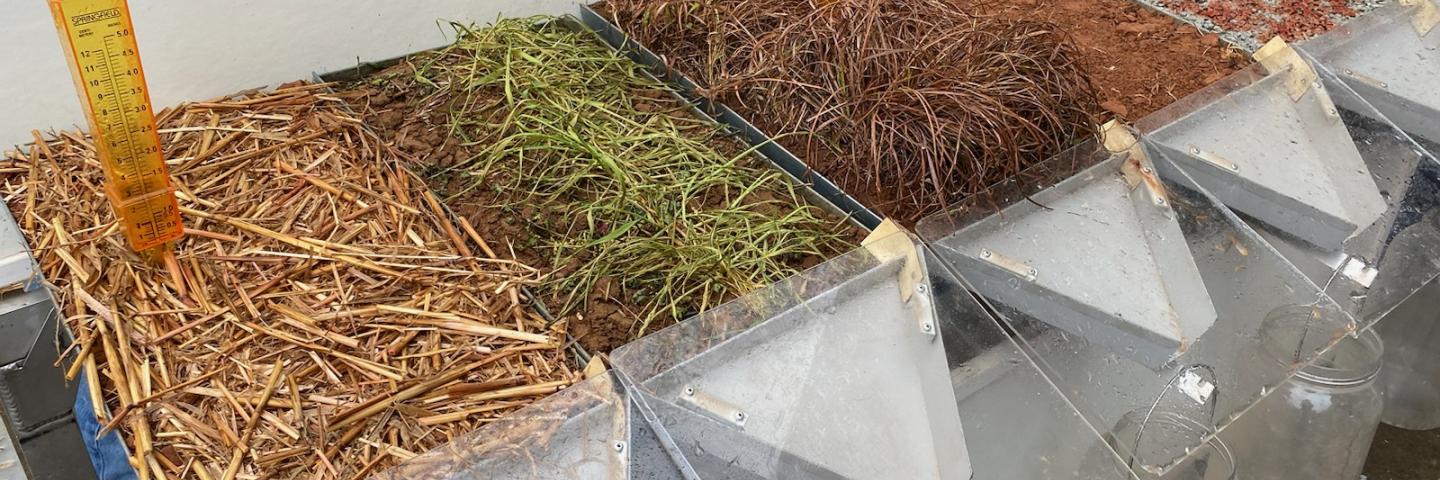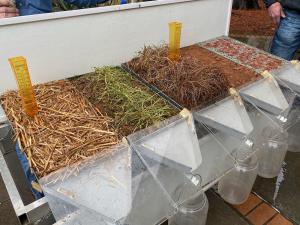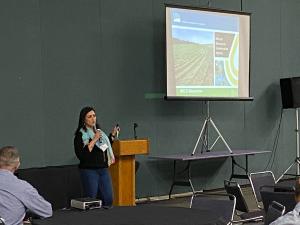Soil Health Takes Center Stage

Producers in the Texoma area recently gathered in Wichita Falls for a Soil Health Workshop focused on increasing biological wealth with ecological principles of soil health.
By Dee Ann Littlefield, Public Affairs Specialist, Henrietta, TX
Producers in the Texoma area recently gathered in Wichita Falls for a Soil Health Workshop focused on increasing biological wealth with ecological principles of soil health. The conference featured speakers highlighting techniques and personal experiences to improve operations through increase soil function and management techniques. The workshop was part of a two-day agricultural event that included the Wichita Falls Farm and Ranch Expo.
While the workshop presentations from research experts Emily Ball with the Soil Health Institute, Dr. Paul Delaune, representing Texas A&M Agrilife Research, and Dr. Katie Lewis, associate professor at Texas Tech University were all excellent, the information shared by the featured farmers really resonated with the audience.
Steve Marten, an experienced farmer from Holliday, Texas, expressed to the audience how his no-till practices had doubled the organic matter and water holding capacity in his fields, which helped him withstand droughts for longer periods of time than conventional tillage methods. Electra farmer, Terry McAlister, talked about how cover crops, which he grows from seeds he harvests, have greatly improved soil health several feet below the field surfaces.
Attendees enjoyed the real-life testimony of becoming a soil health farmer from the father son duo of Roy and Mike Thompson. The pair primarily farm cotton on their land near Littlefield, Texas. Mike attended a soil health conference in Lubbock in 2017 and came home encouraged to change their conventional farm tillage to a no-till management system, with a cover crop rotation. The first year, he yielded 3.88 bales of cotton per acre on a test field, which helped encourage his father to adopt no-till practices farm-wide. The pair shared their challenges and successes of becoming no-till farmers.
“The farmer is like a football offensive coordinator,” Roy analyzed. “He is constantly trying to figure out what the defense, the weather, is going to do. I feel like the no-till and cover crops help you play offense a little better.”
While the discussions and presentations were excellent, the real-life demonstration of how different management practices affect soil health and water infiltration was also impactful to attendees. USDA Natural Resources Conservation Service (USDA-NRCS) Soil Scientist John Sackett and Agronomist Trent Manly set up the NRCS is rainfall simulator and explained what happened when the raindrops fall on five different land management practices they had as part of the demonstration.
The demonstrated practices included no-till with residue management, conventional till, grass

conventional till, pastureland, bare ground and a concrete surface.
pasture, bare ground and concrete surface. As the rainfall simulator “rained” on the pans with the different practices, onlookers were able to watch as the conventional till, bare ground and concrete surface immediately had runoff, whereas the no-till and grass pasture pans had no run-off, but rather a great deal of water infiltration below the surface.
One farmer watching the demonstration said, “Wow! I’ve heard about this, but I’ve never seen it, and now seeing is believing.”
When another farmer was asked what he thought of the demonstration, he responded, “Well, frankly, it’s just pretty depressing. I’ve been plowing my fields for years and years and now I know where all the water that falls on the field is going, and it’s not in my soil for my crops.”
His friend standing next to him, tried to console him by saying, “Well, I guess it’s a good thing it doesn’t rain all that much around here then.”

Eileen Vale, NRCS resource team leader in Iowa Park, visited with the audience about various Farm Bill conservation programs can help producers implement practices such as cover crops, crop rotation, no-till and other practices that help improve soil health, plant health and promote water conservation.
Organized by the Association of Texas Soil and Water Conservation Districts, the Soil Health Conference was co-sponsored by USDA-NRCS, Texas A&M Agrilife Extension, Soil Health Institute, On the Ground, Texas State Soil and Water Conservation Board and Wichita Falls Farm and Ranch Expo.

